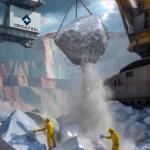Iran’s Economic Landscape in 2030: Prospects and Challenges
Introduction
The Iranian economy stands at a crossroads, with the potential for dynamic growth by 2030. The interplay of domestic policies, international relations, and technological advancements will determine its trajectory. This article provides an in-depth analysis of the economic trends, opportunities, and risks shaping Iran’s financial future.
1. The Role of Energy Diversification
Historically reliant on oil exports, Iran is expected to shift towards a more diversified energy sector by 2030. Investments in renewable energy, including solar and wind power, will be crucial in reducing dependency on fossil fuels. Additionally, advancements in natural gas exports and petrochemical industries will support economic stability.
2. Digital Economy and Technological Advancements
The rise of Iran’s digital economy will be a game-changer. With a young and tech-savvy population, Iran is poised to expand its e-commerce, fintech, and AI-driven industries. Government support for startups and innovation hubs will play a key role in this transformation. Increased internet penetration and the adoption of blockchain technology may also redefine financial transactions and trade.
3. Geopolitical and Trade Considerations
By 2030, Iran’s geopolitical position will continue to influence its economic landscape. Strengthening trade ties with China, Russia, and regional allies through initiatives like the Belt and Road Initiative could provide alternative economic pathways. However, the impact of ongoing sanctions and global economic policies will remain a critical factor.
4. Inflation, Currency Stability, and Financial Reforms
Inflation and currency devaluation have been persistent challenges for Iran. By implementing effective monetary policies, reducing reliance on the U.S. dollar, and encouraging foreign investments, the government can enhance financial stability. Banking sector reforms and digital payment solutions will also play an essential role in ensuring economic resilience.
5. The Real Estate and Infrastructure Boom
Urbanization and infrastructure development will be key components of Iran’s economic future. Investments in smart cities, modern transportation systems, and housing projects will create employment opportunities and drive economic growth. The real estate sector, if properly regulated, can serve as a major investment hub for both domestic and international investors.
Conclusion
Iran’s economy in 2030 holds promise but requires strategic planning, technological investments, and diplomatic maneuvering. With a focus on energy diversification, digital transformation, and economic resilience, Iran can position itself as a key player in the regional and global economy. However, addressing challenges such as inflation, sanctions, and financial reforms will be essential in achieving sustainable growth.









